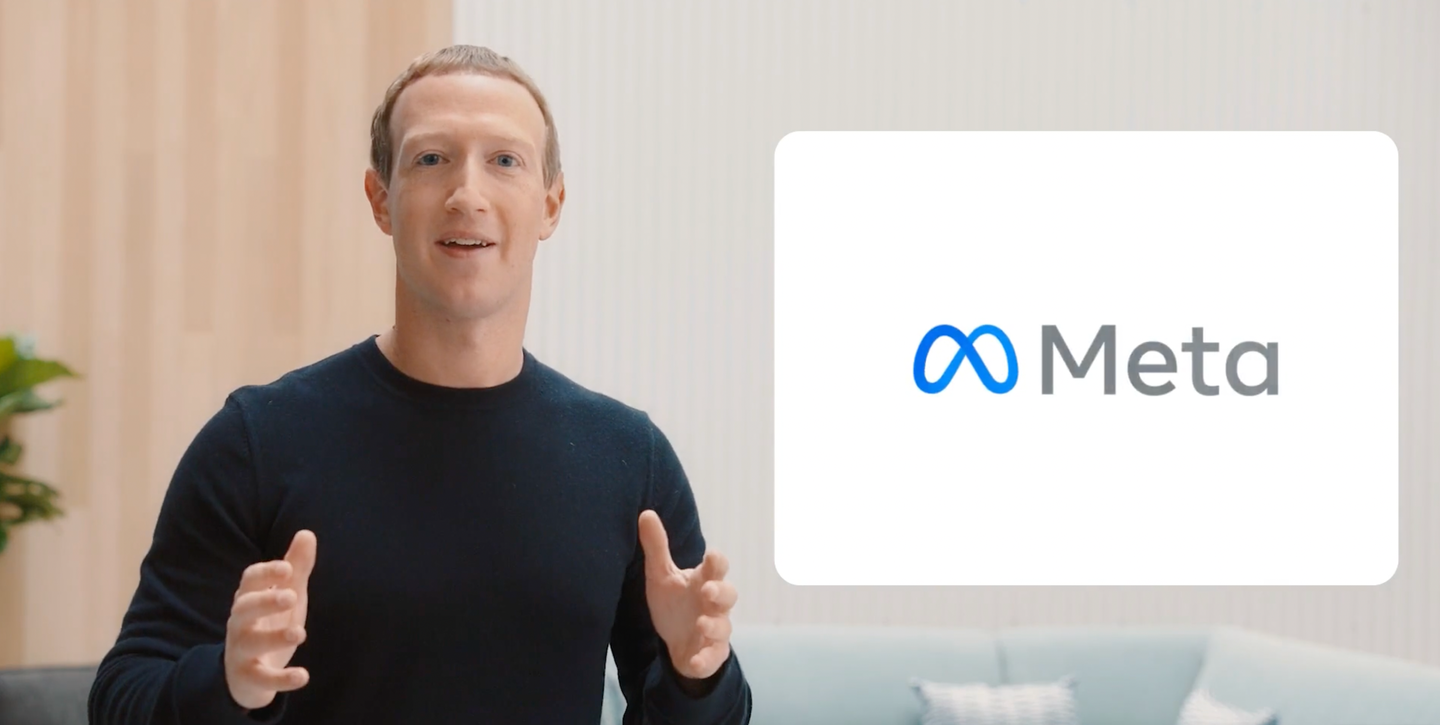Facebook changes its name as it pushes toward a digital reality future
In the 2021 Connect keynote, Mark Zuckerberg outlined his plans for the metaverse and for the future of the company.

Starting today, the Facebook app will move under a new company name: Meta.
Moving forward, the company will be “metaverse first,” CEO Mark Zuckerberg said today, which means that over time, you won’t need to use a Facebook account to access other products under the Meta umbrella.
It also means that the company will report on their business as two different operating segments: one for their family of apps, and one for their work on future platforms (Reality Labs will be the name for that segment). The company intends to trade under a new stock ticker, MVRS, starting December 1.
Zuckerberg made the announcement on Thursday during the keynote of the 2021 Facebook Connect event. (The company name change had been a previous source of speculation following a report from The Verge.) “I’ve been thinking a lot about our identity as we begin this next chapter,” he said. “Facebook is an iconic social media brand, but it just doesn’t encompass everything that we do.”
[Related: Facebook has an explanation for its massive Monday outage]
Zuckerberg argued that they build technology to connect people, and the metaverse is simply the “next frontier.”
“Our devices are still designed around apps, not people,” he adds. “The experiences we’re allowed to build and use are more tightly controlled than ever.”
Zuckerberg spent almost the entire keynote carefully laying out a blueprint that shows what different components within his vision for the metaverse would look like in practice. While building out their social media apps will still remain a focus, he hopes that over time, the company’s brand will be less tightly linked to just one product.
The metaverse will in essence be an embodied internet that Zuckerberg thinks will become the next immersive digital medium to evolve after video (which evolved from photos and texts). Imagine it like virtual teleportation, or an internet that links up various virtual reality and augmented reality social experiences.
Instead of looking at the screen, you’re going to be able to be “in” these experiences. That’s likely to be achieved through creating a deep feeling of presence in a shared space, which would be the defining quality of the metaverse. That will require hardware, such as the Oculus Quest 2 device or others, which the company makes or will make.
[Related: Congress is coming for big tech—here’s how and why]
Zuckerberg also announced that sometime this year, users will be able to make Messenger calls in virtual reality. Virtual reality could also unlock new potential for gaming, which might become a gateway for many to step into the metaverse, he said.
One virtual feature that may help enable this feeling of presence is the newly introduced “Presence Platform,” which will include tools such as Insight SDK, Interaction SDK, and Voice SDK. These tools will let users use hand or voice interactions in their virtual experiences. (An SDK is a “software development kit.”)
A tool called Spark AR could place 3D objects with depth and occlusion into the real world where people can interact with them.
[Related: Renaming the company won’t fix Facebook’s image problem]
Additionally, a new hardware project called “Cambria” will be able to incorporate sensors, tracking, depth perception, and new optics to better represent your physical world in a headset.
Michael Abrash, chief scientist at Oculus, said that they are working to refine the tech of displays, audio, input, haptics (which is feedback that you feel physically on a device), hand tracking, eye tracking, and mixed reality in preparation for the next-generation metaverse.
He illustrated examples of the team’s work in reconstructed reality— recreating realistic people with facial expression and body language, spaces, how things move, how things interact, and respond to interaction. This is done by indexing the texture and geometry of objects in the real world. In a short demo, a researcher’s AR glasses helped them map the room and the objects in it, and the glasses then measured eye movement to estimate what object the researcher wanted to interact with.
[Related: Facebook might rebrand as a ‘metaverse’ company. What does that even mean?]
More importantly, the metaverse would be a new platform that could connect to different apps and allow users to bring items and data across different virtual spaces or even project them into the physical world through augmented reality. In other words, products can be used all across the metaverse instead of only on one app or one platform.
Zuckerberg painted a future where NFTs can be displayed in digital rooms, and independent creators and businesses could build out the metaverse economy through a virtual marketplace by offering new content, services, experiences, or products. And neural interfaces along with AI and neural motor control will be able to translate brain signals into commands.
The company is considering creating incentives for developers and new users to come onboard. These include options like lowering fees, subsidizing devices, or selling them at cost to increase adoption.
However, it’s important to note that the metaverse of Zuckerberg’s dreams certainly does not fully exist. Zuckerberg said that only the basic building blocks do at the moment. Ultimately, technical challenges remain—it’s not easy to compress augmented reality hardware and powerful computers into a pair of glasses, for example.
Although in a founder’s letter, Zuckerberg promises to promote privacy and safety on this new “social technology” platform, it’s yet to be seen whether he can convince people, especially from the younger generations that have been falling off Facebook, to actually use it. And many wonder if a new interface will just bring forth some of the same old problems.
